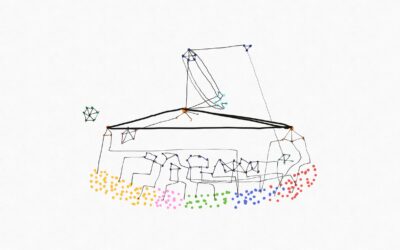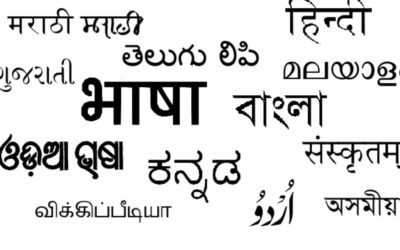With this post, I’m trying to explore the education system in India, the way it has changed over the years and various government policies as well as schemes implemented for the improvement of this system. A lot of non-profit organisations have played a major role. I have also referred to data points that bring out the crisis our country is facing in the education sector; the draft National Education Policy (NEP) 2019 and the impact it can create.
Education has always been one of the bigger challenges the country has been facing since a long time. In India, education has come a long way since the ancient times, traditional system falling apart after the colonial rule began and implementation of a new and foreign system over it. It has thus remained a luxury for most part of the early 1900s controlled by the British, accessible only by the most privileged class. After independence, in late 1900s, education always remained in government’s focus. A lot of work has been done to improve the condition of education, educational infrastructures, framing of policies and laws and making education a fundamental right. Yet, we need much more.
District Primary Education Program (DPEP) was the first program for Education. The objective of the program was to universalise the primary education. It went on to create several educational infrastructure all over the country which was a huge success. The other pioneering program was the Sarva Shiksha Abhiyan which focussed on the age group of 6-14 years old and the ways to uplift their educational status. During this period, much emphasis was given to make changes in the way things were running at the primary or ‘elementary’ level. A sub-program within it, Padhe Bharat, Badhe Bharat was launched. This was to improve comprehensive reading, writing and mathematical skills of children in class 1 and 2.
In its Millennium Development Goals (MDG) assessment in 2015, UNDP stated that India has made significant progress in universalising primary education, and is moderately on track to achieve this goal. Enrolment and completion rates of girls in primary school have improved and are catching up with those of boys (not sure why is that a benchmark), as are elementary completion rates. However, UNDP cautions about the large numbers of children still out of school and failing to complete primary education.
Even with a number of steps taken by the government, there is a huge difference between the reported figures and the reality. Schools across the country, especially in the rural areas, are facing a major learning crisis. Less than 45% of children in Grade 5 know what the teacher was teaching in Grade 2 or before. While 25 million students fail to cope up with their classes and suffer from severe learning deficiencies. There are several factors which led to these figures but we can broadly identify them into:
- Gaps in curriculum
- Unavailability of teachers
- Lack of infrastructure
- Problems with implementation of the educational program
There is a severe gap in curriculum especially in the primary grade that has been affecting the whole system. This curriculum starts with almost all the subjects at once, for a child who is in class 1. There is time limit to learn, start writing and to perform in tests. Usually, writing and learning alphabets in any language or even simple number and mathematical understanding takes a lot of time. If this process does not starts at home or in any pre-school facility, a child taking direct admission in class 1 is at serious disadvantage. This disadvantage remains with them as they move ahead. With a no detention policy till class 8, it is common with the kids especially from an underprivileged background and hence, lack of quality educational facility, to show signs of severe learning deficiencies even when they are in a much higher class.
In India right now, the dropout rate shoots from 4% in primary to 17% in secondary. Out of the many things, it also indicates that the severe learning deficiencies obtained during primary education stay on and only grow as kids move into secondary grades. Another factor is the huge dearth of secondary schools in India.
A number of intervention programs run by the government and organizations all over the country to tackle this problem. The Saksham Ghoshna program in Haryana had the goal to diagnose learning level in government schools and increase the proficiency of children in Hindi and Mathematics. It is an interesting concept where there is a competitive spirit between different blocks of the state to become ‘Saksham’. A block becomes Saksham when 80% of the children are on their grade level. Nearly 68 blocks from 21 districts have claimed this status for themselves in Haryana.

The Odisha Primary Education Programme Authority had two programs – Ujjwal and Utthan, to facilitate a similar action under the learning enhancement program. Both of these collectively work for children from grade 1st to 8th. It is a curriculum designed especially as a 40-day camp to help children who are behind their grade level.
The major problem with programs that are implemented by the government is lack of human resources. In some of the rural and remote areas where schools are understaffed, teachers are already overburdened. They have to teach kids, be a part of school management and do other administration work year round. This includes elections and surveys. Any new program even if it is a training for teachers, adds up to the already existing work. Often, there’s not much time or motivation left to implement these. Even if the system reaches the classrooms, there is hardly any mechanism to monitor the whole system across urban and rural areas. In this case, it might be better to implement such programs with a private partner.
Pratham, one of the largest NGOs in India has been doing significant work for taking quality education to underprivileged children. With ASER (Annual Survey of Education Report), one of Pratham’s models work on improving the learning outcomes of students by teaching them according to their level by first finding out their own levels. Before working on the model at a large scale, several trials were conducted to find out the right approach in implementing ‘Teaching At The Right Level‘ methodology. Pratham is currently working in more than 23 states and has brought about a significant change with the help of governmental agencies.
NEP 2019 provides insight into categories of students who are covered under the education policies of the government. There is an interesting focus on importance, crisis and several solutions for early childhood care and education (ECCE). It talks in detail about the situation of Anganwadis in the country. It states that even if Anganwadis have contributed significantly in improving the health care, it lags behind in education.
It also talks about the fact that 3-6 years, an age group not given much focus, is an important part of the education. The move to incorporate pre-primary education into the already existing schooling system can be a major boost to the present scenario.
Pre-primary education is not a much talked about topic in India. The NEP states with evidence that 85% of a child’s cumulative development happens before the age of six. The curriculum for the pre-primary education as seen in other countries or in some private schools covers four major skills – Physical, Language, Memory and Social Skills. These are to be implemented and worked upon for every child before they enter the primary grades
In India, the state and central boards have guidelines for these classes based on a syllabus with various tests year round. For kids who have not been a part of any pre school activity, it is dangerous to push them into a system which does not gives them a space to understand it.
ThinkZone is one among few social enterprises working in the primary education sector. As a fellow here, I go the opportunity to meet a lot of kids and teachers at their learning centers in villages of Odisha. These learning centers run after school by trained women of the community while the kids sit according to their levels instead of classes. These levels are decided by a baseline test conducted to assess their basic competencies for each level according to the state curriculum. During the baseline activity we went to a number of villages and did these tests for over a hundred students. The results were in line with the observations. Kids in class 5 couldn’t comprehend two digit addition or subtraction. They could read simple English sentences but could not explain or understand the meanings.
The ThinkZone solution works in two phases – Remedy and Prevention. Early childhood education is provided to kids between 3-6 years old. This comprises of skills rather than any specified subjects or topics. Children in early childhood levels get a much required time to be comfortable around the basics of the curriculum for primary classes. This includes understanding of alphabets, numbers both in English and local language along with mathematics skills like numbers and their sequence. This is the prevention part of the syllabus to help them cope up with the deficiencies. They haven’t yet started their journey into the competitive world. It is however, important that the age group between 3-6 is also developing other aspects of the brain. Hence, the division of skills into Physical, Language, Memory and Social is important to monitor a child’s overall progress.
At ThinkZone we have several parameters on which a child’s development is mapped. From body part movement and coordination to clear speaking and identifying of colours, there are several activities which can help. All these parameters ensure overall development of children undergoing pre-primary education.
The second phase of the solution is to target kids who are already in their primary grades but are falling behind. A specialised 5-months remedial program is run for them, so that they can first be identified into their correct learning levels. Then, they are taught in an activity and digital based medium to achieve their correct level. The system is called Teaching at the Right Level – an MIT based approach.
Both the programmes are an after-school program and are run by trained women of the community. Currently operational in three districts, there are around hundred villages right now in Odisha that have ThinkZone centers running. These women are provided with a training before-hand to make them understand the importance and usage of teaching and learning materials along with various audio-visual components provided through a mobile application. Every month, they also get a refresher training to revisit various topics from the curriculum as well as new activities or content for the kids. Thinkzone’s approach towards change works in an after-school approach to achieve grade level competencies among students. NEP also has certain added points which can work towards achieving the same goal.
NEP provides several solutions to the crisis as well. Along with the several modifications in its early childhood programme, it also proposes several modification for primary grade curriculum and educational system. The addition of pre-primary into primary schools could pave an entire new structure that could help strengthen existing educational structure and the incorporation of a new and better curriculum in whole. The policy also mentions government’s push into getting more volunteers to solve the crisis of the lack of teachers in government schools. It introduces two programmes, NTP and RIAP.
National Tutors Programme: A National Tutors Programme (NTP) will be instituted where the best performers in each school will be drawn in the program for up to five hours a week as tutors during the school for fellow (generally younger) students who need help. Being selected as a peer tutor will be considered a prestigious position, earning a certificate from the state each year that indicates the hours of service.
Remedial Instructional Aides Programme: A Remedial Instructional Aides Programme (RIAP) will be instituted initially as a temporary 10-year project to draw instructors, especially women from local communities to formally help students who have fallen behind and bring them back into the fold. These instructional aides would hold special remediation classes during school hours, after school hours and during summer for those children who have fallen so behind that they cannot catch up without an intervention. When possible, these children would be grouped by level and pace. The instructional aides would be true local heroes, bringing back students who might otherwise drop out, not attend, or never catch up.
These two programs are a good opportunity to find local solutions in the community and in the school itself. NTP ensures that not only students find the opportunity to revisit their curriculum in the school within their seniors but it also ensures a learning environment in schools. The RIAP program is an approach that has been followed tested by several organisations including Thinkzone, utilizing local resource to help in learning enhancement among the students.
The policy explores the possibility of including these two programmes with remedial education. The crisis in primary and secondary education can be worked upon with the help of peer tutors in schools as well as with local help to the teachers through RIAP. The policy talks about teachers identifying students among their classes who have fallen behind in their grades and the ways in which these batches could be monitored and tutored by either of the tutoring groups.
The tutors will not be a replacement to the teachers, but will just aide the teachers in their wok-load. For both these programmes, the government encourages retired teachers, army officers and passionate students all across to volunteer and help in the crisis.
With the huge population of students and their education at stake, it’s important that help comes from different sections of the society. The NEP 2019 stresses on mobilisation of the local community and of volunteers: teachers, parents, students, community members, and the public to end the learning crisis. The highest priority set by the policy document is to achieve universal foundational literacy and numeracy in primary school and beyond by 2025. This is exactly the need of the hour right now. With the new policy soon to be in effect and the great work done by organisations as well as the government on remedial solutions and on pre primary education, great changes may soon happen, leading us to actually solving the learning crisis.

References: - Teaching at the Right Level to improve learning - India’s missing millions of out of school children: A case of reality not living up to estimation? - Trends in school enrolment and dropout levels - Working together to teach at the right level




0 Comments